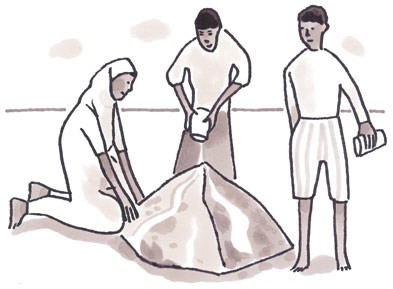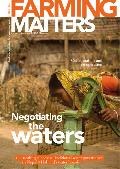When Project WET first began in north central United States in 1984, it aimed to find tools to explain about groundwater processes to schools and communities. Now, 25 years later, the centre produces a wide variety of water resource materials and training programmes for educators in over 50 countries. Sandra DeYonge, Vice President of publications, explains the universality of teaching this subject: “Regardless of culture or geography, one thing that connects us all is water!”
Project WET is mostly aimed at educators and students in primary and middle schools. However its resources, which include curriculum guides, booklets of activities, games, posters and other materials, can be used much more widely. The topics cover all the basics about water – from hygiene and water quality, to learning about the water cycle, watersheds, groundwater and floods.
The concept of watersheds is close to DeYonge’s heart: “A saying that holds true for everyone is that ‘we all live downstream’. We all live within a watershed and I firmly believe that when people understand what this is and how we are all connected by water, then they will behave more responsibly in taking care of it.” This underlines the importance of taking a “watershed approach” when addressing environmental problems.
For more about Project WET and their publications, visit www.projectwet.org, where you can download the “Sum of the parts” exercise and the free booklet “Healthy water, healthy habits, healthy people.” Other publications are available by clicking on STORE, or by writing to: Project WET Foundation, 1001 West Oak Street, Suite 210, Bozeman, Montana 59715, U.S.A
Watersheds as “sum of the parts”
Watersheds are a difficult concept to explain. Project WET defines a watershed as “an area of land that drains into a specific body of water like a river, stream or lake” and includes everything within its borders. A large watershed, such as the Nile’s watershed in northeast Africa, can also contain many smaller watersheds around streams that drain into the Nile river.
But what about people who live in a less obvious watershed? A simple exercise can be used to explain the concept of watersheds anywhere: all you need is a mound of clay, a cup and some water (see illustration, and see box to download the full activity).. Project WET uses this simple tool to get people to simulate water falling down slopes, to understand how water drains down a slope in a particular direction, and how watersheds have boundaries and can also consist of smaller watersheds.
DeYonge hopes that such simple exercises can help people better understand basic concepts about water and apply this understanding to water resource issues in their community. This is central to Project WET’s ”ActionEducation” programme, which encourages schools and communities around the world to organise educational workshops and events, and to then apply their knowledge to help solve a local water resource issue. She explains about a recent festival at a middle school in the United States which stimulated students to set up a recycling programme at their school. Getting serious and difficult concepts across does not have to be boring. To DeYonge, simple games and investigative exercises help show that “learning can be fun” while also going a long way to get people to use shared resources in a responsible way.
Text: Mundie Salm
Illustration: Fred Geven


